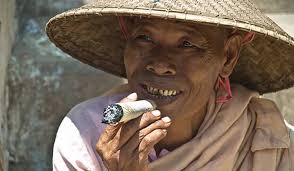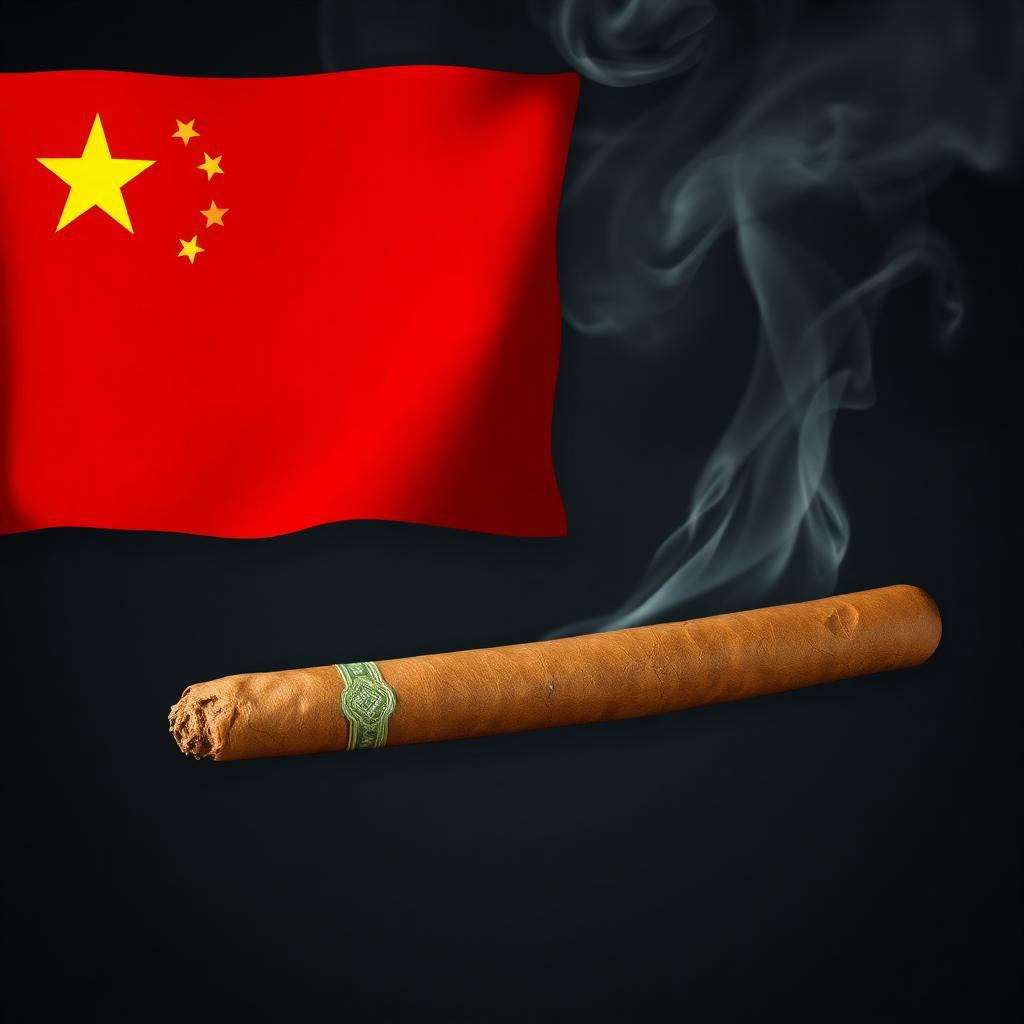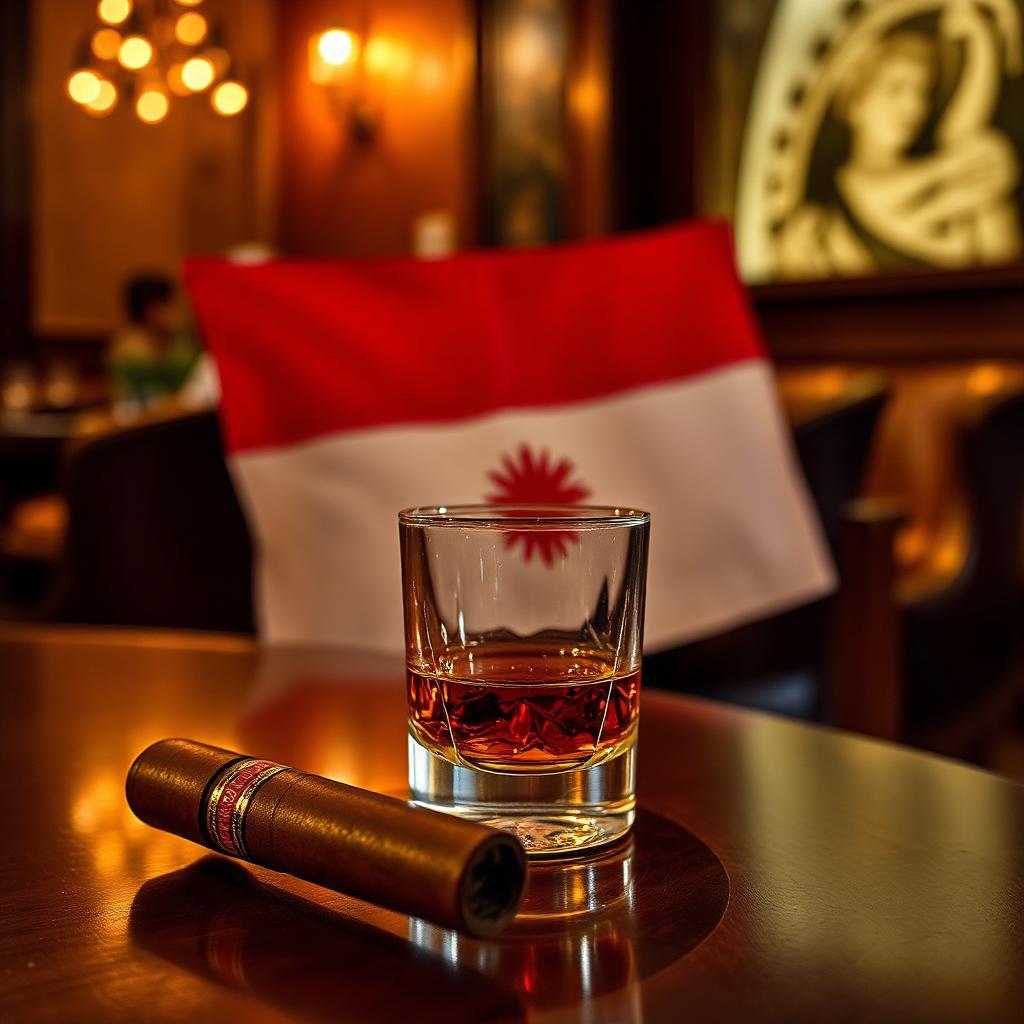Jake Sanders, Editor at Large
Myanmar, a land rich in cultural customs and traditional practices, continues to preserve unique aspects of its heritage—among them, the widespread tradition of cheroot smoking. Once associated primarily with nobility and colonial elites, cheroot cigars have become a symbol of daily life, transcending social and ethnic boundaries across this diverse nation.
A Symbolic and Cultural Mainstay
Cheroots, pronounced “shuh-ROOT,” originate from the Tamil language, meaning “roll of tobacco.” They come in various sizes, from miniature versions slightly larger than cigarettes to substantial, foot-long cigars. Unlike Western cigars with tapered ends, Burmese cheroots feature blunt, clipped tips that make production simpler and more cost-effective. Bundles of 10 to 50 cheroots are readily available at local markets, often sold for mere pennies each, their sweet and aromatic flavor adding to their popularity.
Historically, cheroots gained prominence during the British colonial era, popularized by writers like Rudyard Kipling in Mandalay and George Orwell in Burmese Days. Today, they serve as a ubiquitous fixture across Myanmar’s social landscape, enjoyed by women, men, young and old alike. It’s not uncommon to see elderly women and tribal communities, such as the Naga, confidently puffing on their cheroots—a testament to its deep-rooted cultural significance.
How Cheroots Are Made
The production of cheroots is a meticulous craft, primarily carried out in regions where the necessary ingredients are cultivated. Tobacco is grown along the arid banks of the Ayeyarwady River, while aromatic thanatphet leaves thrive in higher elevations, especially in Shan State.
In workshops, rows of women carefully roll cheroots using traditional methods. The process begins with a mixture of tobacco shavings, star anise, and wood chips scented with flavors like molasses, honey, or tropical fruits. This mixture is packed into a lightweight inner paper lining around a wooden core. A corn or rice husk tip acts as a filter or unfiltered mouthpiece. The final step involves wrapping a dried thanatphet leaf around the assembled ingredients, tying it with a label to keep everything secure, then folding the ends to produce the finished cheroot.
This hand-rolled process is remarkably swift—each cheroot takes roughly 25-30 seconds to produce. Skilled workers can craft over 1,000 cheroots in a single day, showcasing the traditional craftsmanship passed down through generations.
Experience Myanmar’s Cheroot Heritage
Visitors eager to immerse themselves in Myanmar’s rich cultural tapestry can explore cheroot production firsthand via Heritage Line’s river cruises. These journeys offer onboard workshops where guests can learn the art of cheroot rolling and even practice Burmese phrases to purchase souvenirs during village visits.
Particularly popular is a stop in Pakkoku, where travelers can witness artisans at work in local workshops, gaining insight into this enduring craft. Whether on a 2-day cruise along the Ayeyarwady or an extended 11-night voyage along the Chindwin River, discovering Myanmar’s cheroot tradition offers a unique, flavorful glimpse into the country’s cultural heritage.
A Cultural Artifact and Daily Ritual
Cheroot cigars are more than mere tobacco products; they are a part of Myanmar’s social fabric—a symbol of tradition, craftsmanship, and everyday life that continues to thrive across its diverse communities. As Myanmar modernizes, cherished customs like cheroot smoking remain a vital link to the nation’s rich cultural identity.



